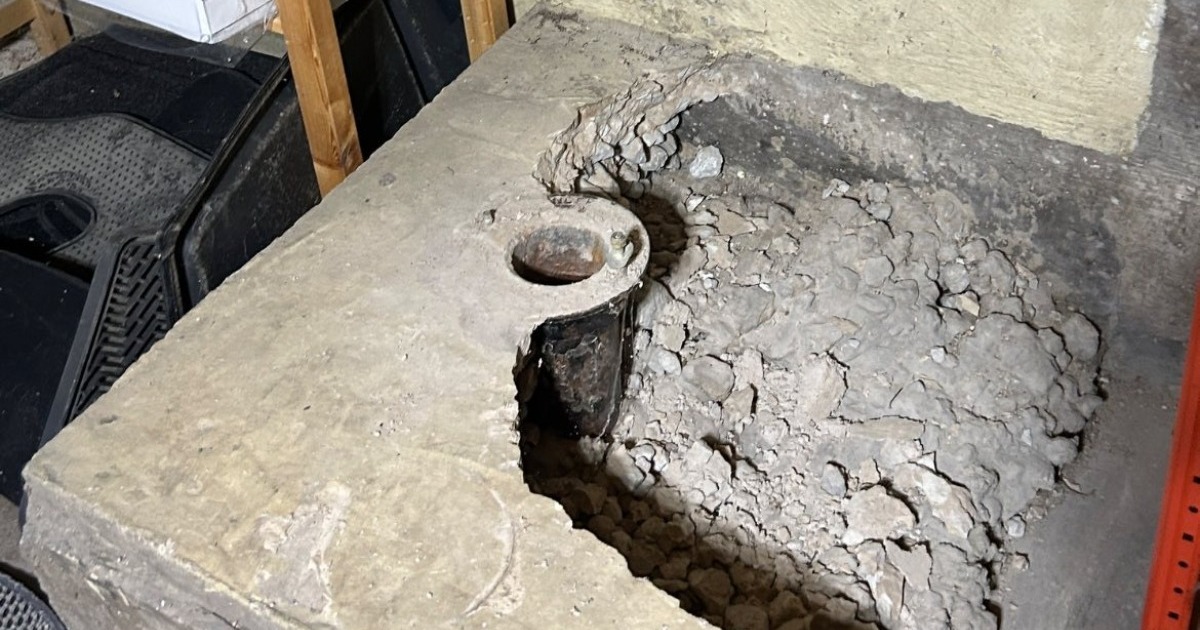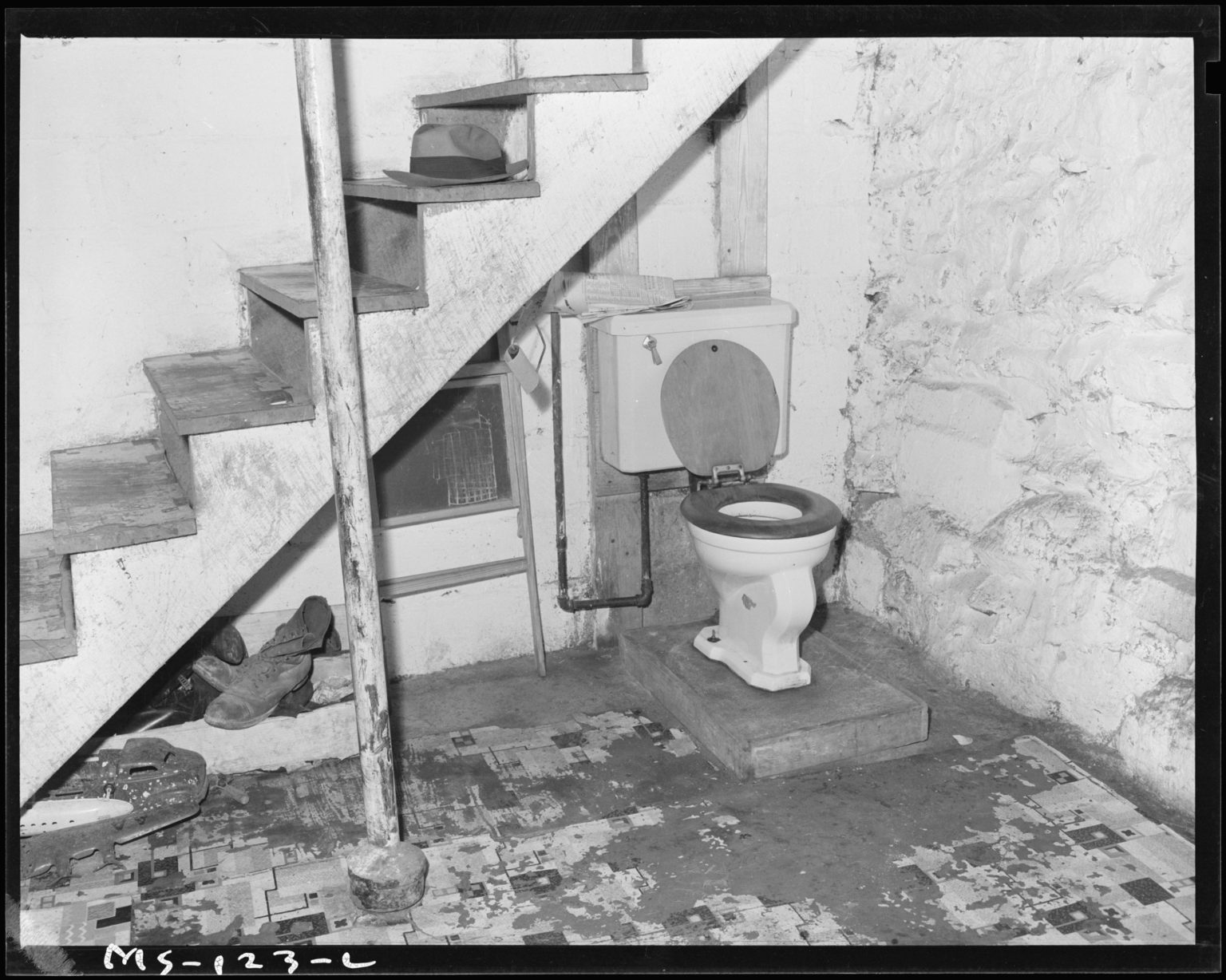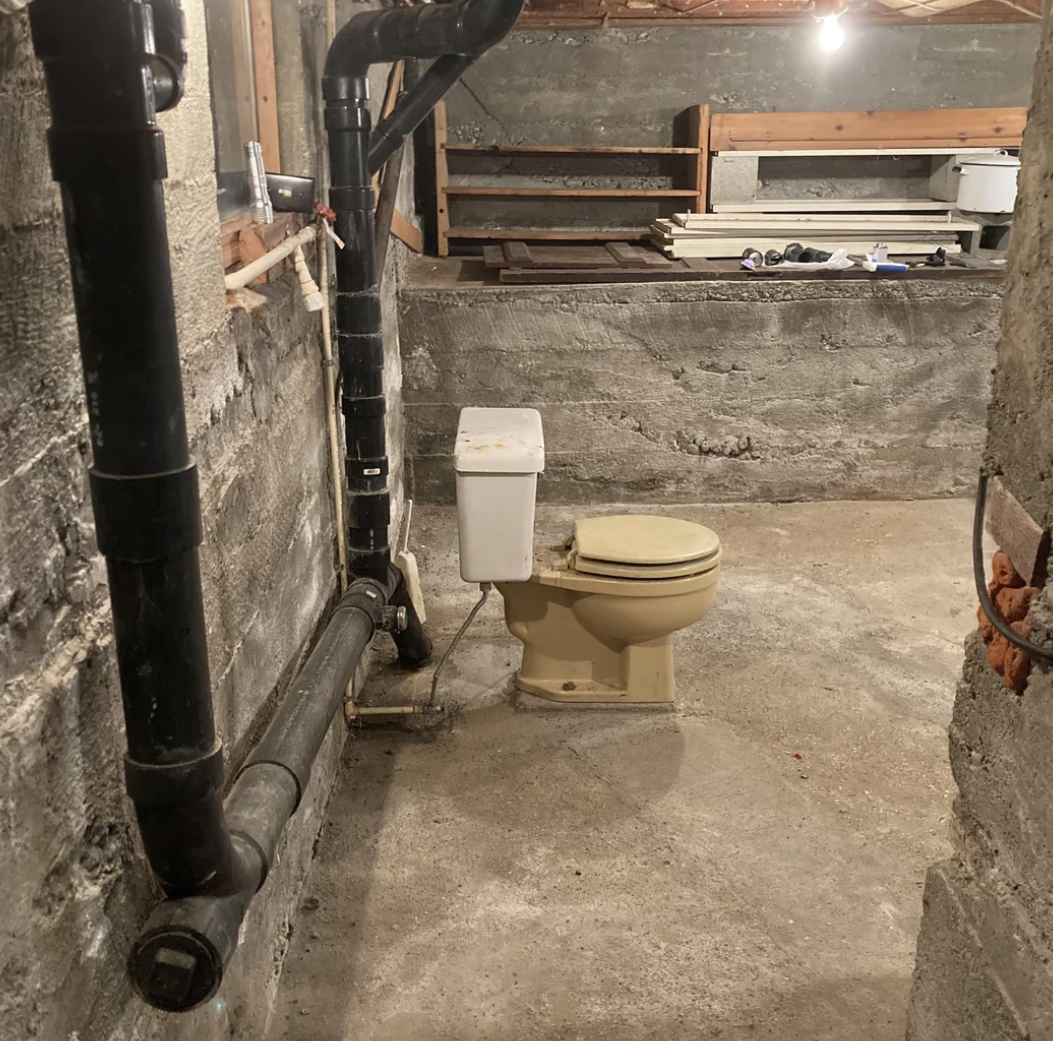A Basement Mystery in 1920s Homes

Source: FB / Caroline Usher
While many older homes have an odd basement feature consisting of a singular pipe protruding from a poured concrete slab (and possibly covered in cracked cement), this may be all that is remaining of a “Pittsburgh Toilet.”
Although called for “Pittsburgh,” these basement toilets could be located anywhere in the United States. They were common throughout the U.S., especially in lower-middle income homes constructed between 1900-1940.
What Was a “Pittsburgh Toilet”?
A “Pittsburgh Toilet” was simply a toilet that was placed into a concrete basement floor, usually without a wall, sink, or any other bathroom fixtures. A typical installation would include a nearby floor drain or a utility sink.
The primary identifying feature of the “Pittsburgh Toilet” is the “Closet Flange.” The Closet Flange was a circular device which attached the toilet to the house’s primary sewage line. So if you can locate an exposed cast iron pipe which has bolt holes drilled into the concrete, it is probably a “Pittsburgh Toilet”.

Why Did People Build Them?
1. Worker Hygiene
In the industrial cities of the time, workers were employed in jobs such as steel mill work, coal mining, etc. Due to the physical nature of their job, when returning to their home, they needed to quickly clean themselves before entering their family members’ living space. Thus, the use of a “basement toilet” kept the upstairs living area clean.
2. Cost Efficient Installation
It was less expensive and easier to install a toilet in the basement of a house than installing one in a higher level of the home. The close proximity to the main sewer line also reduced the amount of piping needed. Consequently, it saved on labor costs.
3. Reduced Damage From Backed Up Sewage
Basement toilets sometimes operated as a means to reduce water pressure in case of a back-up of sewage. Therefore, they prevented potential damage to the higher levels of the home.
Decline of the Basement Toilets
When indoor plumbing became more widespread and people began to live in different ways, the demand for basement toilets decreased. Many of the original basement toilets were either removed from the basement, capped off, or remained unused. Today, few remain visible. Those that do are a cast iron pipe with bolt holes drilled into the cracked concrete — an indication of how homes were previously built for functionality rather than aesthetics.

How to Identify a “Pittsburgh Toilet”
If you find a cast iron flange in your basement floor and the flange is encircled by a platform or broken concrete, you likely discovered the remnants of a “Pittsburgh Toilet.” This is indicative of how homes were originally designed to be functional first.
A Glimpse of History
The “Pittsburgh Toilet” symbolizes a practical age of home building. Prior to the construction of large luxurious bathrooms and guest rooms, homes were built with a focus on efficiency and simplicity. The basement toilet provided an unassuming solution to a basic problem. It was functional and intended to provide years of service.